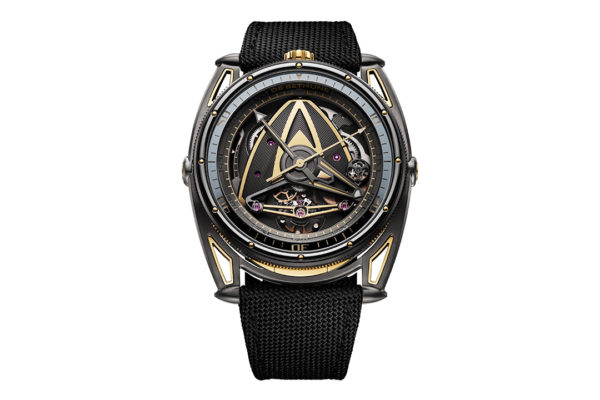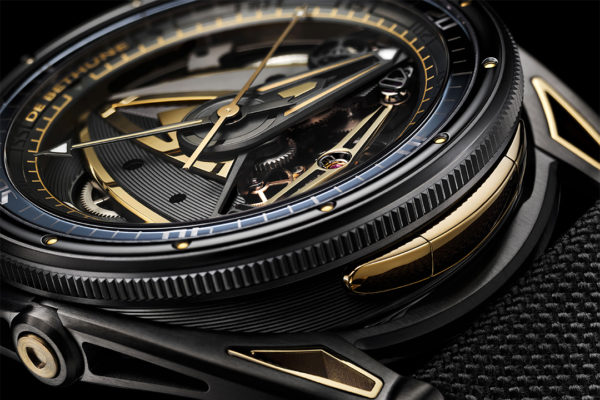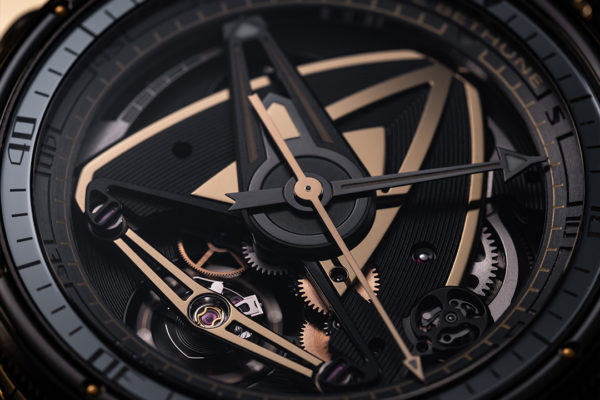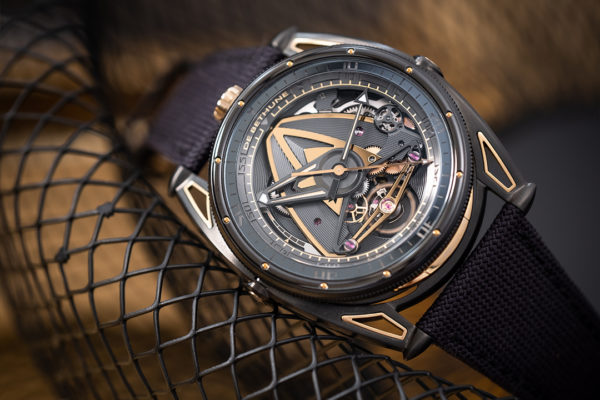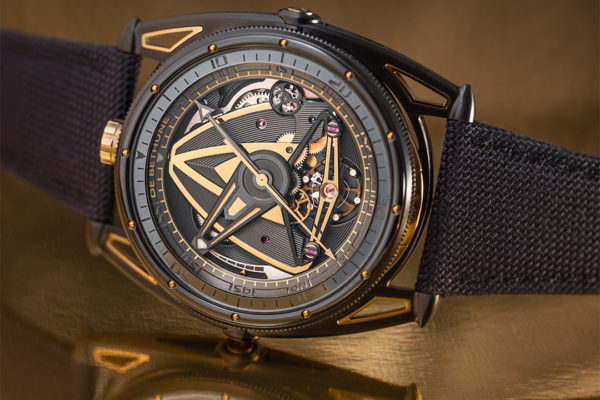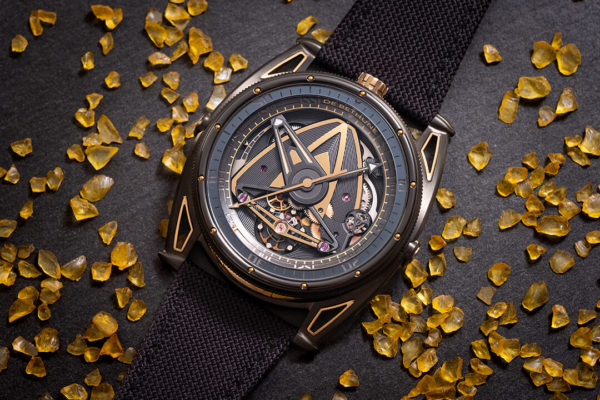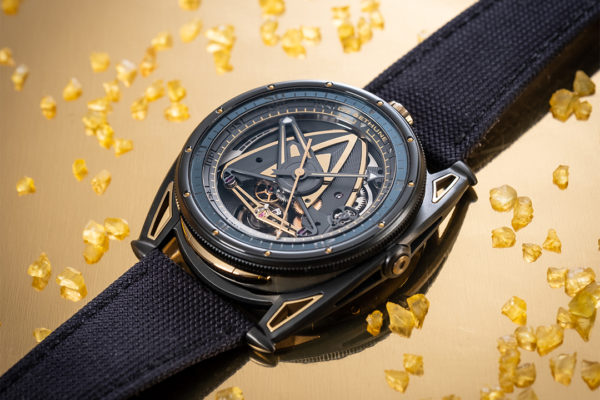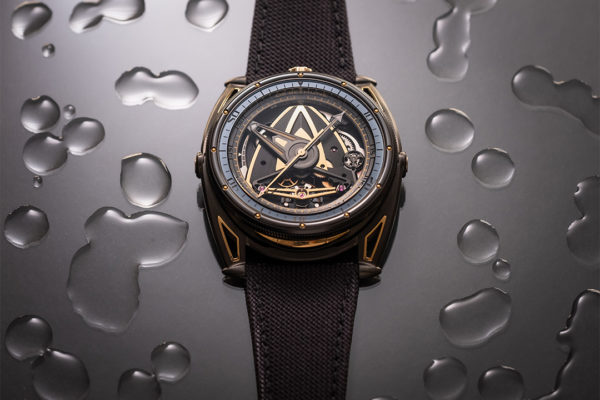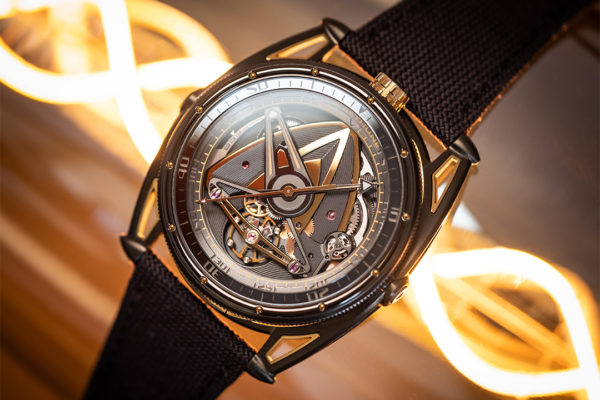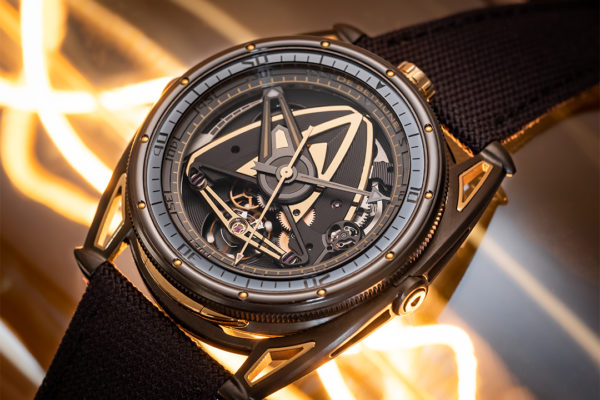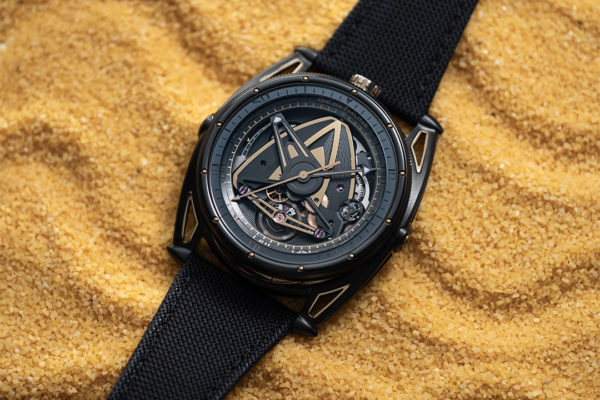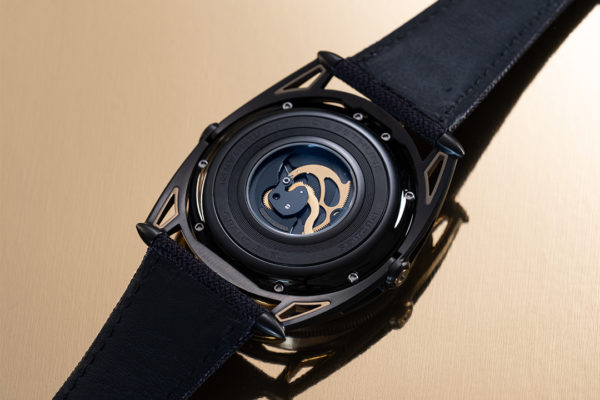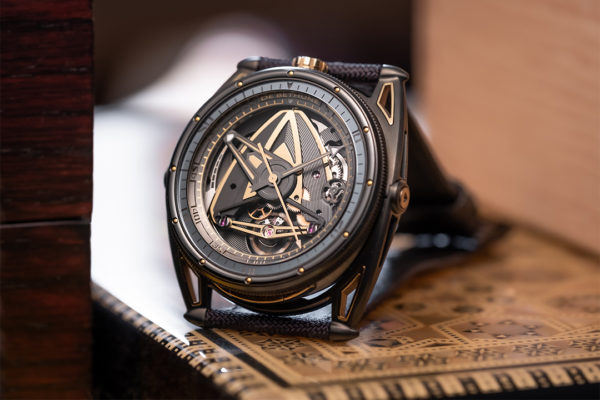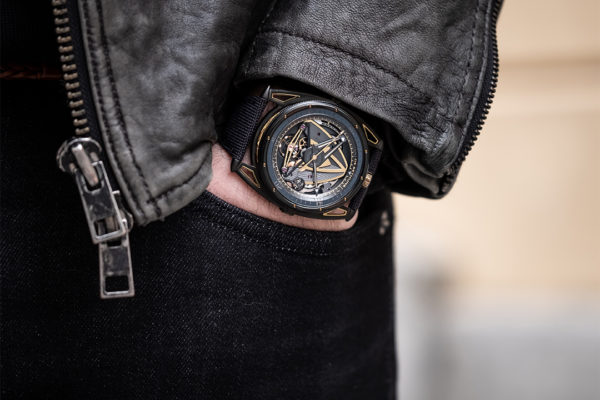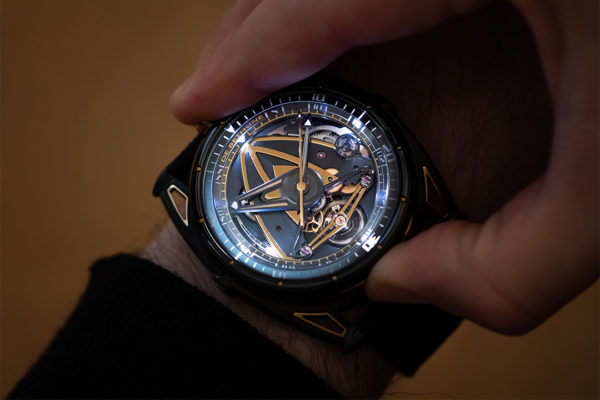De Bethune in Black and Gold
A nod to the daring age of Formula 1 in the 1970s,
but also, and above all, to that key period of mechanical and aerodynamic research…
De Bethune captures this spirit with the DB28GS ‘JPS’.
JPS. John Player Special. Three letters evoking the legendary association of black and gold. More than a brand, a whole universe, an iconic colour code; that of Team Lotus with its totally revolutionary, unbeatable cars, the most successful of their time, often cited as the most beautiful Formula 1 cars ever built! JPS is like a mechanical dream. A succession of victories. Seven Constructors’ World Championship titles, six Drivers’ World Championship titles shared by legendary drivers such as Jim Clark, Graham Hill, Jochen Rindt, Emerson Fittipaldi, Mario Andretti… What an era!
Those of us who were boys and girls in the early 1970s remember seeing the black and gold ‘rockets’ through their teenage eyes; the drivers and their black and gold suits; the black and gold helmets; the engineers whose work we glimpsed for the first time thanks to the installation of cameras in the pits…
Lotus JPS cars were also the first single-seaters to take full advantage of the major technological advances of the time, as well as research aerodynamics, and the first computer-assisted developments… F1 helped shape the collective imagination. Fearsome and severe black paired with glorious gleaming gold made JPS a 1970s benchmark from which De Bethune drew inspiration for a new version of its DB28GS ‘JPS’ sports watch.
A sporty black and gold watch; a nod to the bold ‘JPS’ spirit of the era
What a pleasure for Denis Flageollet and his team to go back to that time and indulge in “tuning” his first sports watch – the DB28GS – so as to offer a black and gold version in steel, titanium and zirconium.
Constantly refining the structural nuances hovering between polished and matt, dark grey and deep black, while sparingly adding golden accents that are in fact yellow titanium – a new opportunity to demonstrate De Bethune’s expertise in working with the oxidation of titanium and its colour palette. De Bethune blue, the brand’s historic and pioneering signature, is now succeeded by a golden yellow colour, for which the creative process required new assembly techniques and new texturing skills – all of which Denis Flageollet and his team have developed to bring the project to fruition and thus pay tribute to this formidable era of high-tech discoveries.
Mechanical communion
1978. The Lotus 78 JPS Mark III revolutionised the aerodynamics of competitive motoring. Its all-new upturned aeroplane wing profile enabled it to leverage the suction effect. The car was truly ‘glued’ to the track, spectacular, innovative, defying convention and committed to uncharted optimisation territory. Its unique handling enabled Mario Andretti to become a legend in his own right, and the Lotus team with him.
Just as the engineers of the F1 teams were looking to improve the aerodynamics of their single-seaters (and to increase the suction effect of the cars on the track), Denis Flageollet and his team also worked on improving the performance of the movement’s regulating organs. This notably involved enhancing the aerodynamics of the balance by pursuing the exact opposite objective of motor-racing in seeking to eliminate the suction effect that pushes it towards the mainplate.
To clarify matters, it is worth recalling that air is also a fluid, albeit an invisible one. A Swiss mathematician, Daniel Bernoulli, developed a principle stating that within the flow of a fluid, an acceleration occurs simultaneously with a decrease in pressure. This is what enables an aeroplane to fly. Its wings have two different profiles: on the curved side, the air goes faster (because it has to cover a greater distance); while on the other side, the air flows slower, with the difference in pressure creating the lift that allows the plane to fly.
This is exactly what Denis Flageollet is trying to do with his balances: they pass so close to the mainplate that they tend to experience a suction effect. In the case of a race car, its upturned wing generates negative lift that pushes the car towards the track, increasing the grip of its tyres and enabling it to go faster around corners. De Bethune’s balances have exactly the opposite effect, giving them an “aeroplane wing” effect and thus providing lift and lightness that almost allows them to “fly”.
While the suction effect is even more powerful with the acceleration of the car, the same occurs during the acceleration phase of the balance. Just as the F1 car takes advantage of the upturned wing to press the car to the ground when it accelerates, the benefit is just as effective in reverse for the balance, which uses the aeroplane wing process to avoid it being ‘pushed’ towards the mainplate.
Mastering DLC treatment
Similarly, whereas F1 engineers were among the first to work on DLC (Diamond-Like Carbon) anti-friction coatings to reduce the friction of metal parts in their engines and thus improve performance, Denis Flageollet and his team have worked on the fantastic properties of DLC coating on hardened steel to improve the durability of watches’ black floating lugs and bezels.
Often used rather inappropriately in watchmaking by applying it to materials that are too soft – such as 316L stainless steel or titanium which are deformed beneath the DLC layer and render it brittle – De Bethune uses DLC treatment only on ultra-hard tempered stainless steels such as those used in engines or for sharp surgical tools. The hard DLC layer adheres perfectly to the hard material and is not destroyed by impacts (unlike a DLC treatment applied to an excessively soft material); on the contrary, it even improves the overall quality.
While the two-tone colour scheme of the DB28GS ‘JPS’ is in equal measure dark and bright, matt and glossy, it also features a blend of lighting and enlightenment.
Exactly ten years ago, De Bethune started developing timepieces imbued with a more contemporary spirit, as embodied in the first DB28. Already at the time, Denis Flageollet – founder and Master Watchmaker of De Bethune as well as a keen outdoor sports enthusiast – felt the need to create watches suited to an active lifestyle.
Based on the observation that a sports watch must offer perfect legibility in all kinds of weather and every possible situation, the movement was developed from the outset in such a way as to light up the dial and movement from the inside. A white light source is thus produced by an entirely mechanical means that works on a dynamo-inspired principle.
No electronics, no battery, entirely mechanical… A pusher at 6 o’clock serves to provide light on demand thanks to a gear train driven by the double barrel. By means of an original miniature dynamo, this gear train supplies the energy necessary to light up the face of the watch without affecting its operation and the energy necessary for the smooth running of its movement. This is a real challenge that is truly comparable to the highly technical operation of a minute repeater movement, in which the overall energy efficiency must be maximal and perfectly controlled.
A few seconds of light are more than enough to read the time, even at night. The DB28 GS ‘JPS’ is black and gold, even in the dark.
Ergonomy and comfort
Finally, the DB28 GS originally launched in 2015 meets De Bethune’s sporting, technical and aesthetic aspirations. Measuring 44 mm in diameter and water-resistant to 105 metres (10 ATM), the DB28GS ‘JPS’ is no exception to the De Bethune rule of wearer comfort.
It owes this exceptional comfort to the combination of black zirconium and stainless steel; the softness of its hand-polished finish; the 12 o’clock position of its crown; and above all to the presence of the patented floating lug system with their famous cone-shaped tips that are more pro-eminent than ever, comprising polished yellow grade 5 titanium inserts recalling the side of the case. The result is a construction that adapts particularly well to the size of each wrist and the way it moves.



